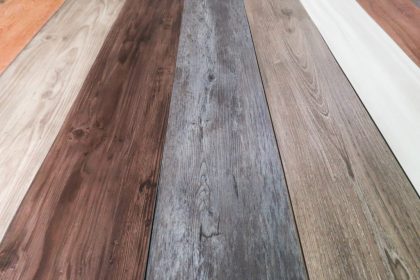Summer is coming and, as with every change of season, the time has also come to wash the curtains at home: I know, washing the curtains by hand, but also in the washing machine is a long and tiring job, but it is necessary to do this for hygienic and aesthetic reasons.
Fresh and clean curtains are the business card of a well-kept home, but the main reason for cleaning curtains at least once a year is the health of the inhabitants.
Dirt and dust (which inevitably accumulate on textile decorations such as curtains) contain bacteria that can cause allergies and irritation of the respiratory tract.
Furthermore, it is advisable not to allow dirt, dust and smoke, and nicotine residues to accumulate, as, penetrating the fibers of the fabric, would cause a stale smell, ruin it in the long run and inevitably shorten the life of the furniture.
It is therefore obvious that proper care of home curtains allows them to be kept intact and beautiful for as long as possible and also to save the money that would be spent if they were to be replaced with new ones.
Naturally, the curtains in the kitchen, which are also exposed to the vapors emanating from cooking, must be washed more frequently, as well as those in the bathroom and the curtains in the rooms where you sleep.
What to do before washing curtains in the house
Before washing the curtains, you must carefully examine the fabric they are made of and the label with the cleaning instructions: if it is forbidden to wash them by hand or if you have any doubts, do not hesitate to take them to the laundry. trust that it can dry clean.
The instructions on the labels of modern furnishing fabrics are generally reliable, but you may have to wash handcrafted curtains made by the upholsterer (usually without any indications about it) and, in this case, my suggestion is to contact those who he packed to ask for advice.
This is because, in addition to the fact that lined awnings and some delicate fabrics must only be dry cleaned, the new fabric must be soaked before packaging and, if by chance this step was not made, even cotton sheets, or fabrics that are normally washable with water, could shrink and shorten.
It may seem strange, but, after making sure that your curtains can be washed with water, the second thing to do is to check that the weather conditions are favourable for quick drying of the curtains.
I say this because, even if you wash them in the washing machine and subject them to a short spin, they must still dry naturally and the use of an electric dryer is not recommended unless you use a horizontal steam dryer.
The ideal is to carry out the work on a day with a dry and, possibly, windy climate: atmospheric humidity slows down drying (whether it takes place indoors or outdoors) and favors the formation of bad smells and stains. mold with the risk of having to redo the job.
If you want to hang out the sheets in the open air, choose, if possible, a windy day with clouds, as the sun’s rays fade the colors and favor the yellowing of white fabrics.
When you detach the drapes from the stick, collect the hooks (and any other tools for laying the curtains) in an accessible and easy-to-remember place: I have sometimes lost a lot of time looking for them, having forgotten where I had stored them.
If the curtain does not have rings and you find that it will not be easy to later identify the exact points where to apply the hooks, mark them on the back with small points of transparent pink nail polish.
These marks, invisible once the curtain is in place, will be very useful when you need to put it back in its place.
Before “pulling down” a curtain, pass the vacuum cleaner or electric brush at minimum power on its surface to remove the bulk of the dust, but if the texture of the fabric is particularly delicate, skip this step and gently shake it on the windowsill or inside. ‘open, after removing the hooks and any other metal elements.
Check the curtain to identify the presence of any stains and halos that you will have to pre-treat before the actual washing.
If this is your first time washing a curtain, do a “ wash test ” on a small, invisible, and hidden part of the fabric.
How to wash indoor curtains by hand
I prefer to hand wash almost all the curtains in my house in cold water, as I think it is ideal for not wearing them and making them last a long time.
First of all, you need to make sure that there are no various kinds of patches: if you identify their presence, pre-treat them, with dry fabric, with Marseille soap, or with a specific product for furnishing fabrics.
Marseille soap can be left to act for hours, while it is good to consult the instructions on the package if it is a chemical stain remover.
Do not rub the stains:
But just dab them, as is done with chocolate ones, to prevent them from spreading and penetrating more into the fabric texture.
Before washing the curtains by hand, I adopt a trick that Grandma taught me to eliminate the “bulk” of smog deposited on them: I put the cloth in the bathtub with plenty of cold water for 15 minutes, then I change the water and I repeat the operation 1 or 2 times (it depends on how dirty it is).
You will notice from the yellow-brown color of the water that this soap-free ” pre-soak ” is useful!
Then I move on to the actual washing, adding new cold water and detergent to the bathtub (for small curtains you can also use a large tub).
Suitable detergents are liquid detergent for delicate fabrics, soap or Marseille soap in flakes, diluted in water to which one or more glasses must be added (always depending on the amount of water used and the size of the curtain) of white vinegar of wine to sanitize the fabric and revive the colours.
If the curtain is white and you want to obtain an optimal result, you can add 2-4 tablespoons of baking soda or perborate instead of vinegar.
To whiten yellowed curtains:
You can also prepare an active oxygen mixture with 2-3 cups of Marseille soap flakes, 2 tablespoons of sodium percarbonate and 2-3 tablespoons of coarse salt and add it to the soaking water of the curtains however, it must not exceed 30 °.
Although I generally prefer natural detergents, I must say that washing furnishing fabrics I also find myself very well with specific products and in particular with Bleaching Curtains, an additive that I have been using regularly for years to wash white curtains that have become yellowish. or greying over time, because I have found that it is the most effective in bringing them back to their original whiteness.
The soaking time varies from 20 minutes to even a few hours depending on the fabrics and, if the curtain is particularly dirty, it is advisable to repeat the wash.
To remove the most stubborn dirt on washable colored fabrics you can also use a mixture as a detergent to be prepared and used in this way: make a mixture with 1 glass of white vinegar, the juice of 2 lemons, and 3 tablespoons of salt and leave the fabric to soak for about 2 hours.
Once the soaking is complete, you need to rinse very carefully and change the water until there are no more traces of detergent or foam.
Before hanging them, make sure that the windows, the rod, and the hooks are perfectly clean so as not to nullify the time and effort that, in any case, washing and drying the curtains involve, even if the work is carried out correctly. more correct and less tiring.





